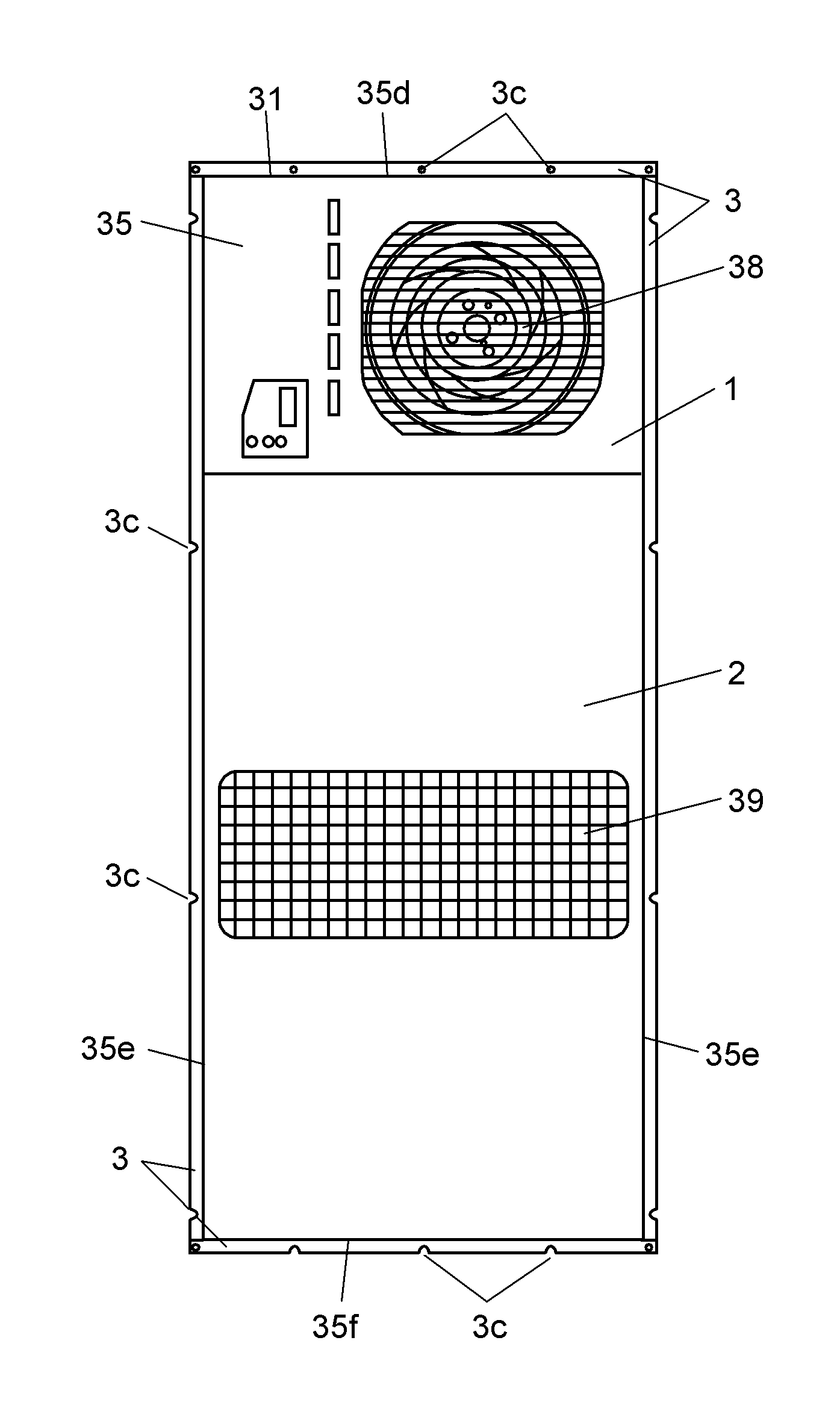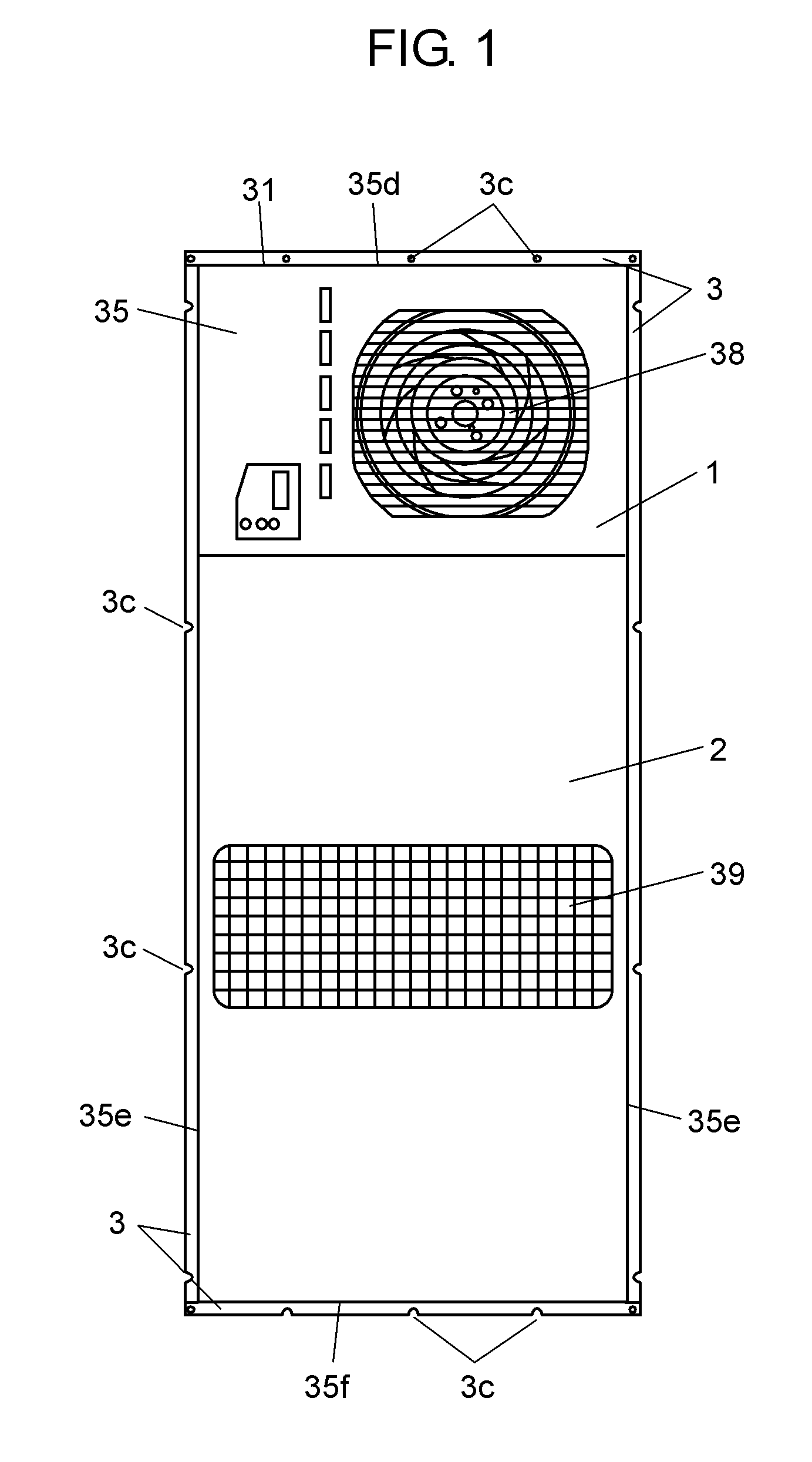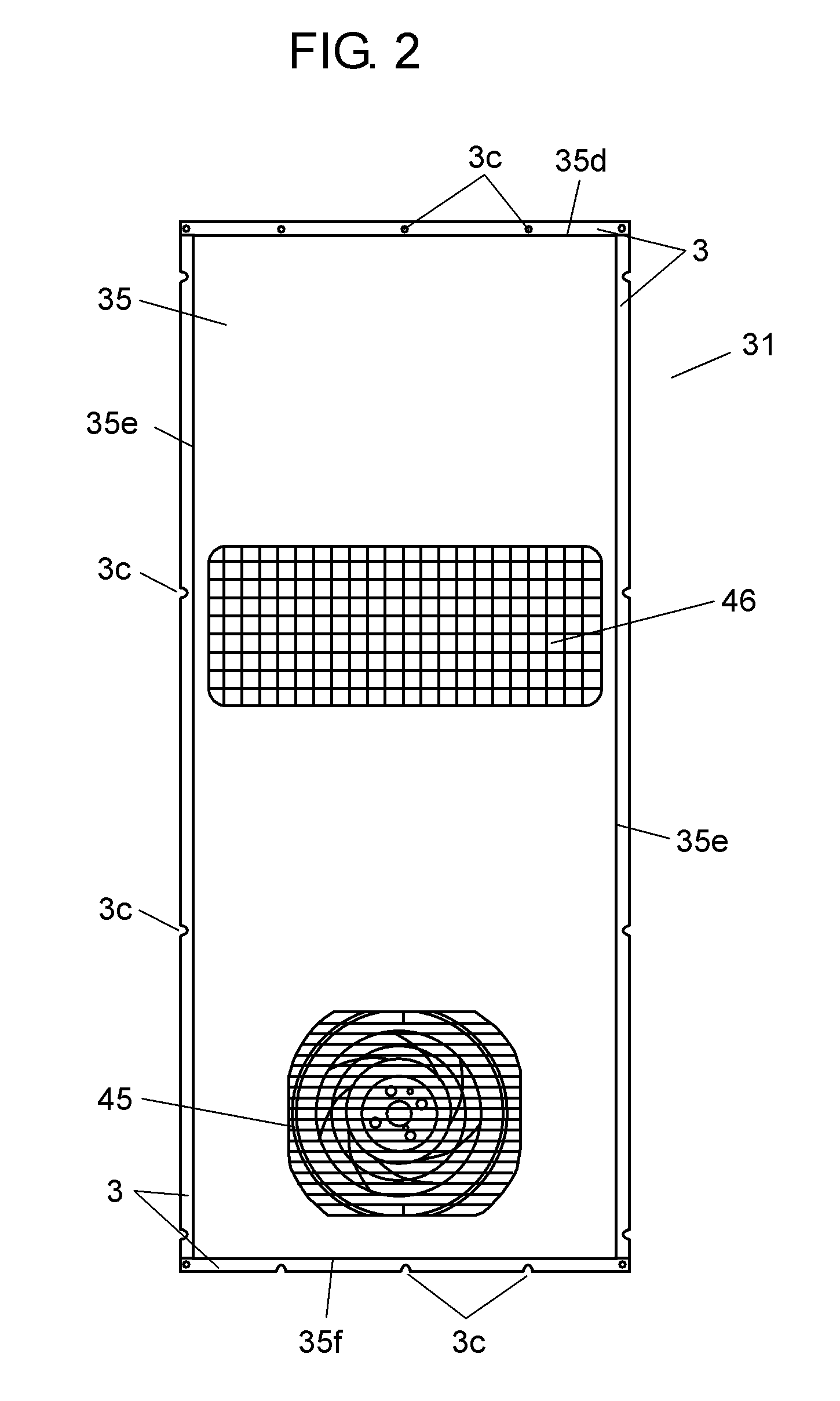Cooling Device
a cooling device and cooling technology, applied in the direction of casings/cabinets/drawers, heating types, casings/cabinets/drawers, etc., can solve the problem that the cooling capacity may tend to decline, and achieve the effect of reducing the drop of cooling capacity, and reducing the drop of air flow ra
- Summary
- Abstract
- Description
- Claims
- Application Information
AI Technical Summary
Benefits of technology
Problems solved by technology
Method used
Image
Examples
embodiment 1
Preferred Embodiment 1
[0079]Preferred embodiment 1 of the present invention is described while referring to FIG. 1 to FIG. 8. FIG. 1 is a front view of cooling device 31 in preferred embodiment 1 of the present invention. FIG. 2 is a rear view of cooling device 31. FIG. 3 is a schematic side structural diagram showing a state of cooling device 31 being installed in heating element storing box 4 (hereinafter called box 4). FIG. 4 is an internal structural diagram of cooling device 31. FIG. 5 is a partial exploded perspective view of heat exchanger 9 of cooling device 31. FIG. 6 is a magnified perspective view of section 50 for accommodating indoor side turbo fan 7 (hereinafter called fan 7) of cooling device 31. FIG. 7 is a schematic perspective view showing a mounting state of indoor air duct 17 (hereinafter called duct 17) of cooling device 31. FIG. 8 is a schematic sectional structural diagram along section line 8-8 of cooling device 31 shown in FIG. 4.
[0080]As shown in FIG. 1 and...
embodiment 2
Preferred Embodiment 2
[0093]Preferred embodiment 2 of the present invention is described below while referring to FIG. 9 and FIG. 10. Same components as in preferred embodiment 1 are identified with same reference numerals, and detailed description is omitted. FIG. 9 is an internal schematic perspective view of controller box 15 in cooling device 31 in preferred embodiment 2 of the present invention. FIG. 10 is a schematic perspective view showing relative positions of indoor air duct 17 and exhaust port 19 of controller box 15.
[0094]As shown in FIG. 9 and FIG. 10, as a flow-in port of control device accommodating unit, intake port 18 of box 15 communicates with same section 50 as blow-out port 52 of fan 7. That is, intake port 18 communicates with section 50 at high pressure side of fan 7, and is also provided near printed board 14a contained in box 15. Printed board 14a is a part of control device 14, and is a heating element which generates a large amount of heat. As a result, pr...
embodiment 3
Preferred Embodiment 3
[0099]Preferred embodiment 3 of the present invention is described below while referring to the drawing. Same components as in preferred embodiments 1 and 2 are identified with same reference numerals, and detailed description is omitted. FIG. 11 is an internal schematic perspective view of controller box 15 in preferred embodiment 3 of the present invention.
[0100]Intake port 18 communicates with section 50 at the high pressure side of fan 7. Further, intake port 18 is provided on back side 15a of box 15 on an extension line linking exhaust port 19 and printed board 14a. Exhaust port 19 communicates with duct 17.
[0101]In this configuration, a part of the air blown out from fan 7 forms air stream 64 to flow from intake port 18 into box 15. The air flowing into box 15 cools printed board 14a, and flows almost straightly into exhaust port 19, and is exhausted from exhaust port 19 to outside of box 15. That is, the air is exhausted into duct 17.
[0102]Printed board ...
PUM
 Login to View More
Login to View More Abstract
Description
Claims
Application Information
 Login to View More
Login to View More - R&D
- Intellectual Property
- Life Sciences
- Materials
- Tech Scout
- Unparalleled Data Quality
- Higher Quality Content
- 60% Fewer Hallucinations
Browse by: Latest US Patents, China's latest patents, Technical Efficacy Thesaurus, Application Domain, Technology Topic, Popular Technical Reports.
© 2025 PatSnap. All rights reserved.Legal|Privacy policy|Modern Slavery Act Transparency Statement|Sitemap|About US| Contact US: help@patsnap.com



